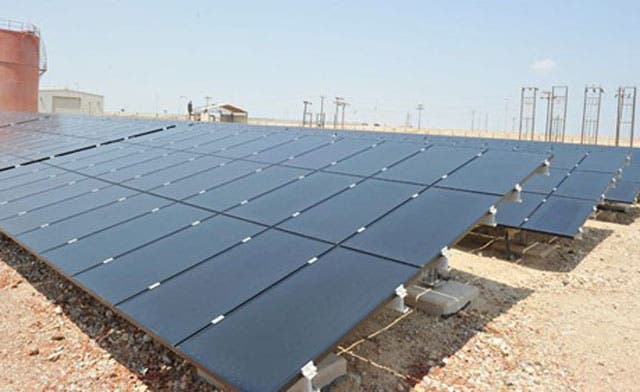2aguy
Diamond Member
- Jul 19, 2014
- 112,558
- 52,805
- 2,290
Good article that covers the myths of solar and wind energy......again, this isn't about creating cheap, reliable, plentiful energy...this is about reducing the availability of American energy so that the elite can dictate to us where we can live, what we can drive, how big our families are, what we can eat......
If you don't understand this, you don't know what is going on....
Wind and solar are remarkably inefficient, which means that they require enormous amounts of raw materials. Using wind and solar to supply the world’s energy needs is not possible, but even attempting it would require the biggest mining, manufacturing, transportation and construction project since the Industrial Revolution.
This chart shows the raw materials required by wind and solar compared with other energy sources:
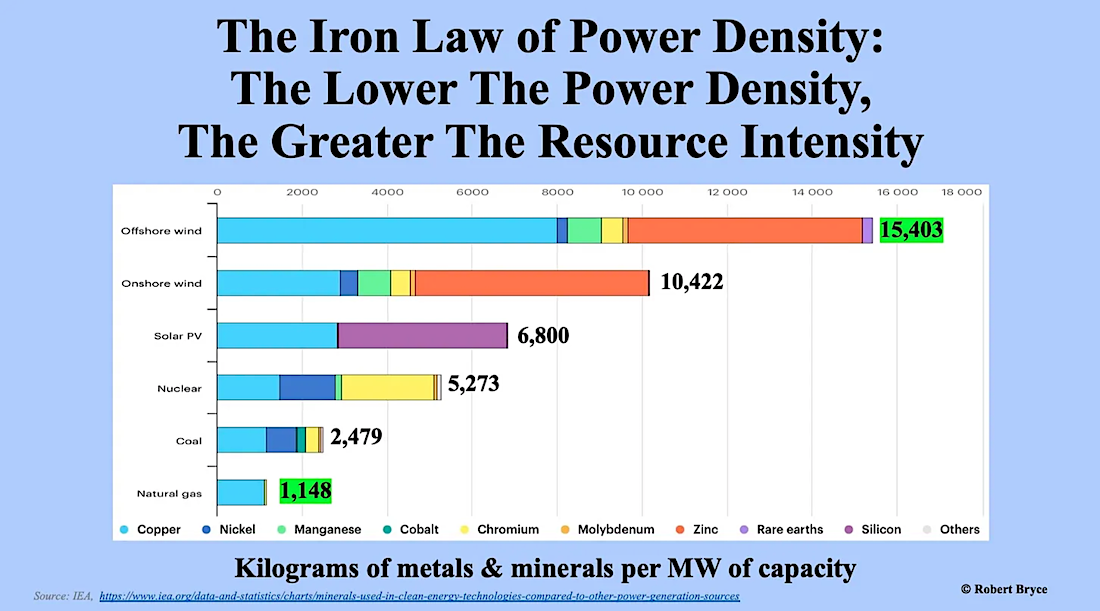
Let me know when liberals are prepared to green light the enormous amount of mining needed to produce those minerals. These days, we can’t even build a dam.
But along with mineral resources, the land needed for wind and solar installations is an important constraint:
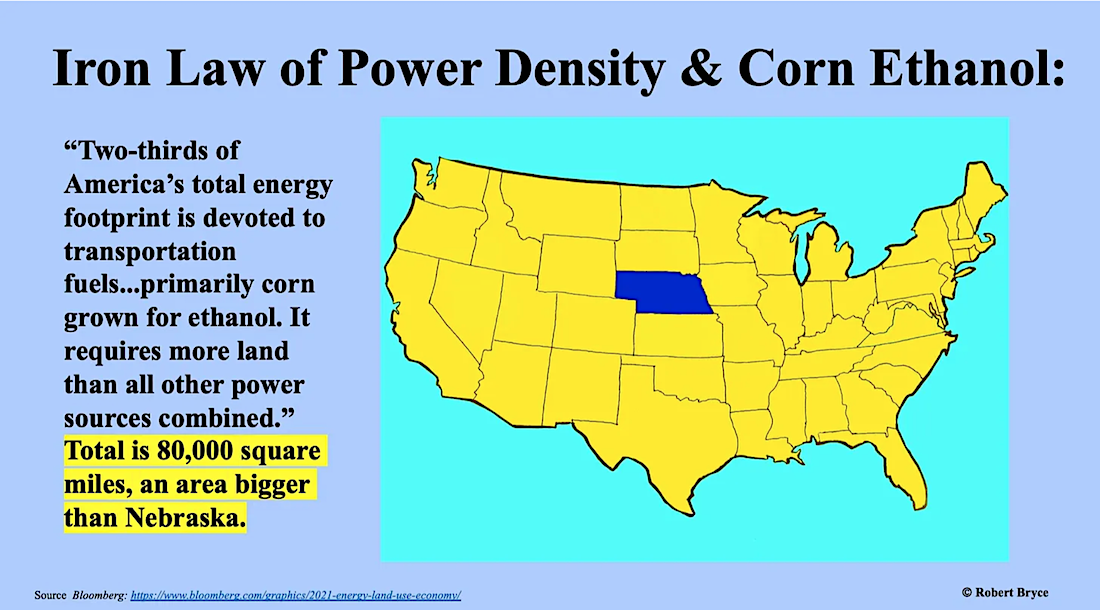
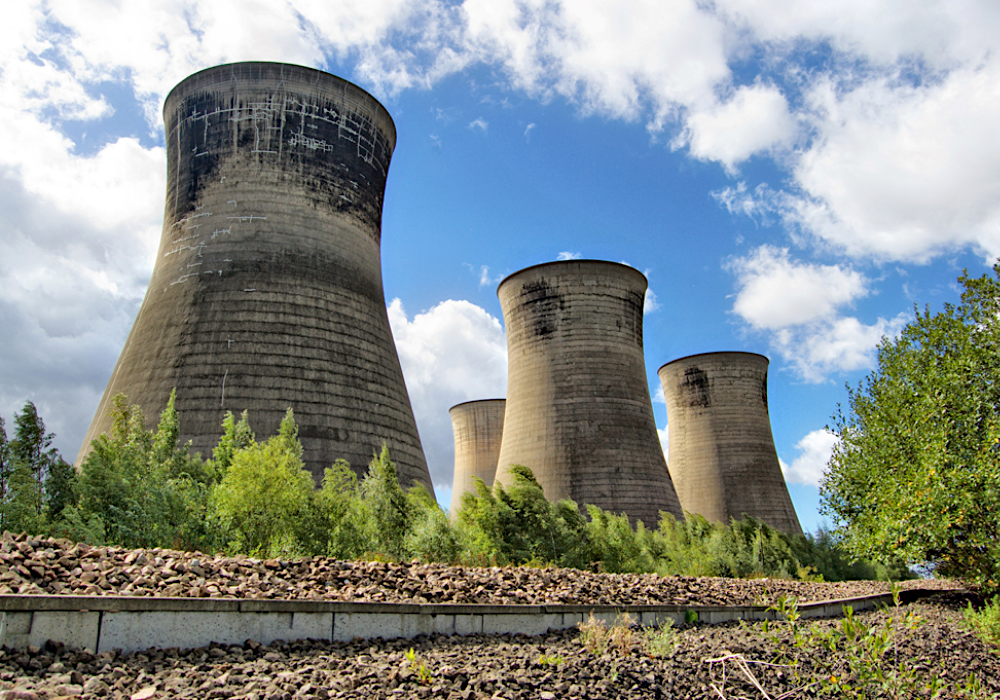
 www.powerlineblog.com
www.powerlineblog.com
The Substack story this article is covering....
None of the claims in Krugman’s August 7 column are new. For years, academics from elite universities, climate activists, leaders of the anti-industry industry, and legacy media outlets (and the New York Times in particular) have been peddling shopworn claims about “all-gain-no-pain” renewables.
You’ve no doubt heard them: renewables are cheap and getting cheaper, wind and solar energy are the future, and the main reason that conservatives and knuckle-dragging rural landowners are opposing massive renewable projects all across America is that they don’t understand “science.”
That’s the spin. Here’s the reality: the conspiracy against wind and solar is one of basic math and simple physics. It’s not conservatives who are wrong on “science,” it’s liberals like Krugman and his myriad allies in the climate claque who refuse to recognize (or even discuss) the physical limits on our energy and power networks.
------
Corn ethanol, wind, and solar are not only dependent on the weather, they are also cursed with low power density. (About 1 watt per square meter for wind and 10 watts per square meter for solar.) That means that like ethanol, they, too, require vast amounts of land. They also require vast amounts of copper, zinc, molybdenum, silicon, and rare earth elements like neodymium. With inflation hitting commodities of all kinds, the mineral intensity of wind and solar is hitting the bottom lines of the big renewable companies.
----
Since Bruch’s TV appearance, the problems at Siemens Energy have worsened. Last week, the German company announced it lost $2.4 billion on its wind business in the latest quarter and it expects to lose $4.9 billion in 2023 due to costly fixes it will have to make to wind turbines it has sold. What happened? In the ongoing effort to wring more electricity from the diffused energy in wind, Siemens has made bigger and bigger machines with longer and longer blades. In doing so, they made the turbines more fragile and thus more likely to break. On August 7, the same day Krugman’s column was published in the Times, Reuters reported that in addition to the multi-billion-dollar loss the company:
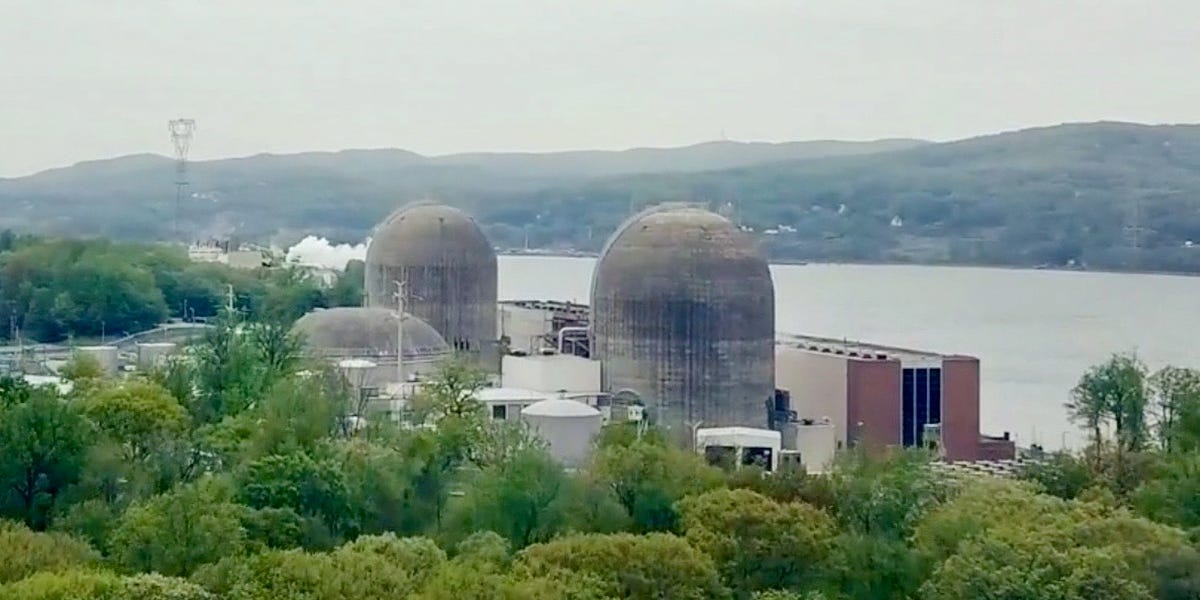
 robertbryce.substack.com
robertbryce.substack.com
If you don't understand this, you don't know what is going on....
Wind and solar are remarkably inefficient, which means that they require enormous amounts of raw materials. Using wind and solar to supply the world’s energy needs is not possible, but even attempting it would require the biggest mining, manufacturing, transportation and construction project since the Industrial Revolution.
This chart shows the raw materials required by wind and solar compared with other energy sources:

Let me know when liberals are prepared to green light the enormous amount of mining needed to produce those minerals. These days, we can’t even build a dam.
But along with mineral resources, the land needed for wind and solar installations is an important constraint:
Proving why low-power-density sources are the wrong choice for modern society takes only a modicum of effort.


The Prophet of Power Density
That would be energy expert Robert Bryce. At Substack, he demolishes the Left’s latest “green” fantasies, beginning with the same Paul Krugman column that Steve noted here. None o…
The Substack story this article is covering....
None of the claims in Krugman’s August 7 column are new. For years, academics from elite universities, climate activists, leaders of the anti-industry industry, and legacy media outlets (and the New York Times in particular) have been peddling shopworn claims about “all-gain-no-pain” renewables.
You’ve no doubt heard them: renewables are cheap and getting cheaper, wind and solar energy are the future, and the main reason that conservatives and knuckle-dragging rural landowners are opposing massive renewable projects all across America is that they don’t understand “science.”
That’s the spin. Here’s the reality: the conspiracy against wind and solar is one of basic math and simple physics. It’s not conservatives who are wrong on “science,” it’s liberals like Krugman and his myriad allies in the climate claque who refuse to recognize (or even discuss) the physical limits on our energy and power networks.
------
Corn ethanol, wind, and solar are not only dependent on the weather, they are also cursed with low power density. (About 1 watt per square meter for wind and 10 watts per square meter for solar.) That means that like ethanol, they, too, require vast amounts of land. They also require vast amounts of copper, zinc, molybdenum, silicon, and rare earth elements like neodymium. With inflation hitting commodities of all kinds, the mineral intensity of wind and solar is hitting the bottom lines of the big renewable companies.
----
Since Bruch’s TV appearance, the problems at Siemens Energy have worsened. Last week, the German company announced it lost $2.4 billion on its wind business in the latest quarter and it expects to lose $4.9 billion in 2023 due to costly fixes it will have to make to wind turbines it has sold. What happened? In the ongoing effort to wring more electricity from the diffused energy in wind, Siemens has made bigger and bigger machines with longer and longer blades. In doing so, they made the turbines more fragile and thus more likely to break. On August 7, the same day Krugman’s column was published in the Times, Reuters reported that in addition to the multi-billion-dollar loss the company:

The Power Of Power Density
Paul Krugman hypes renewables in the New York Times, but the Iron Law of Power Density won’t be repealed
Last edited:
